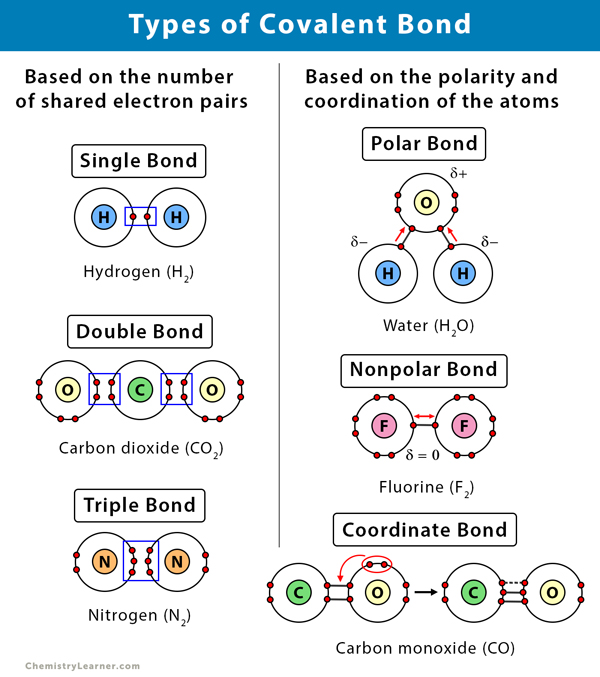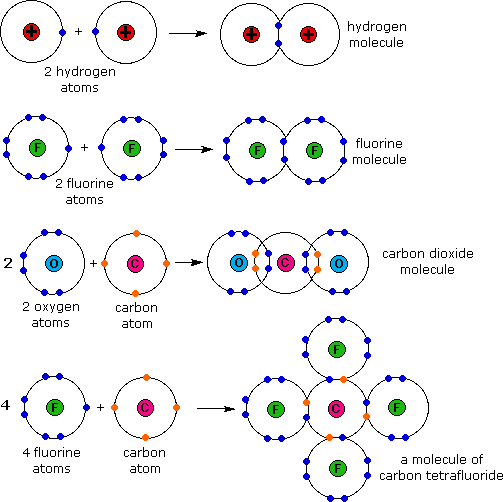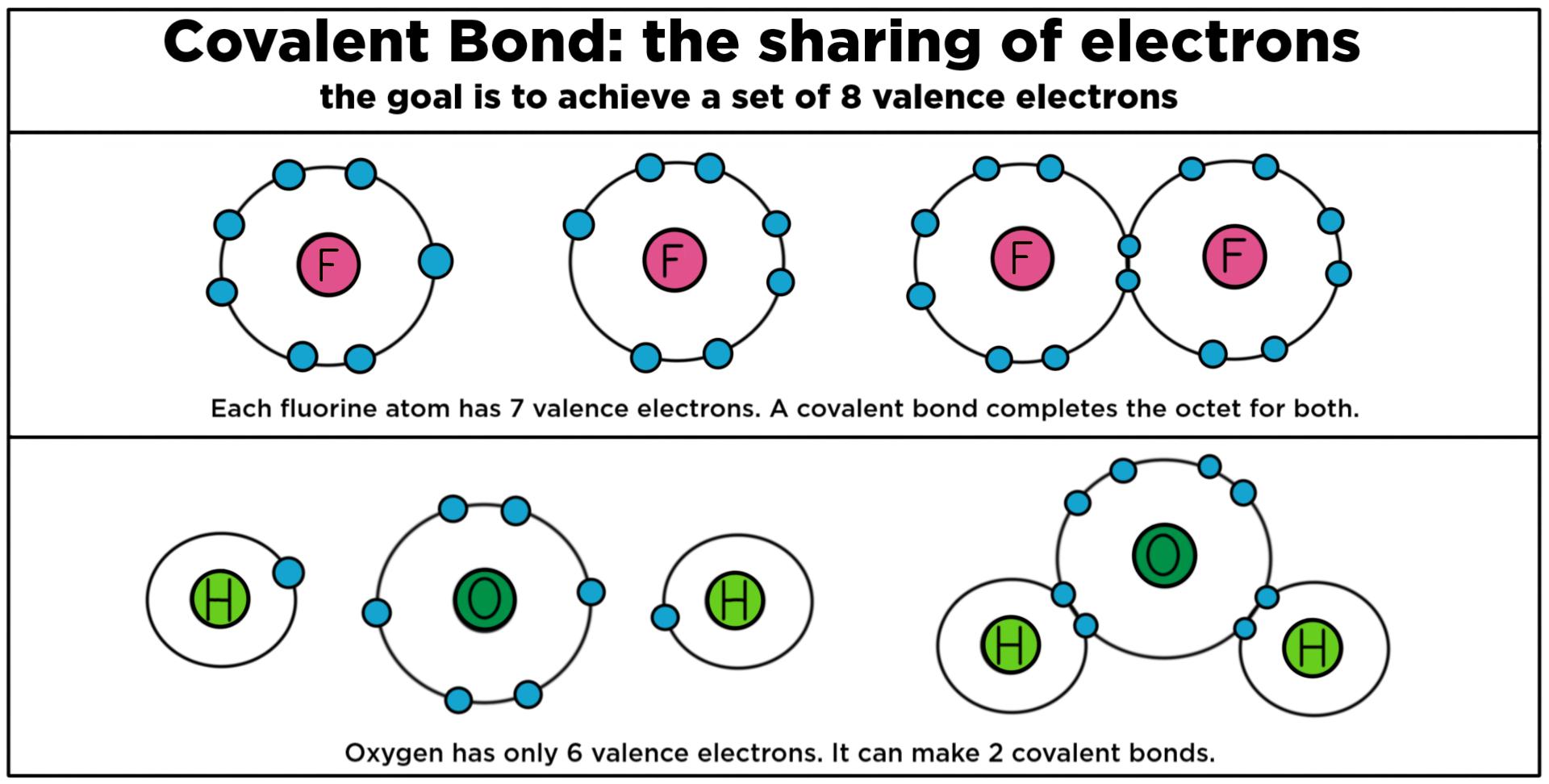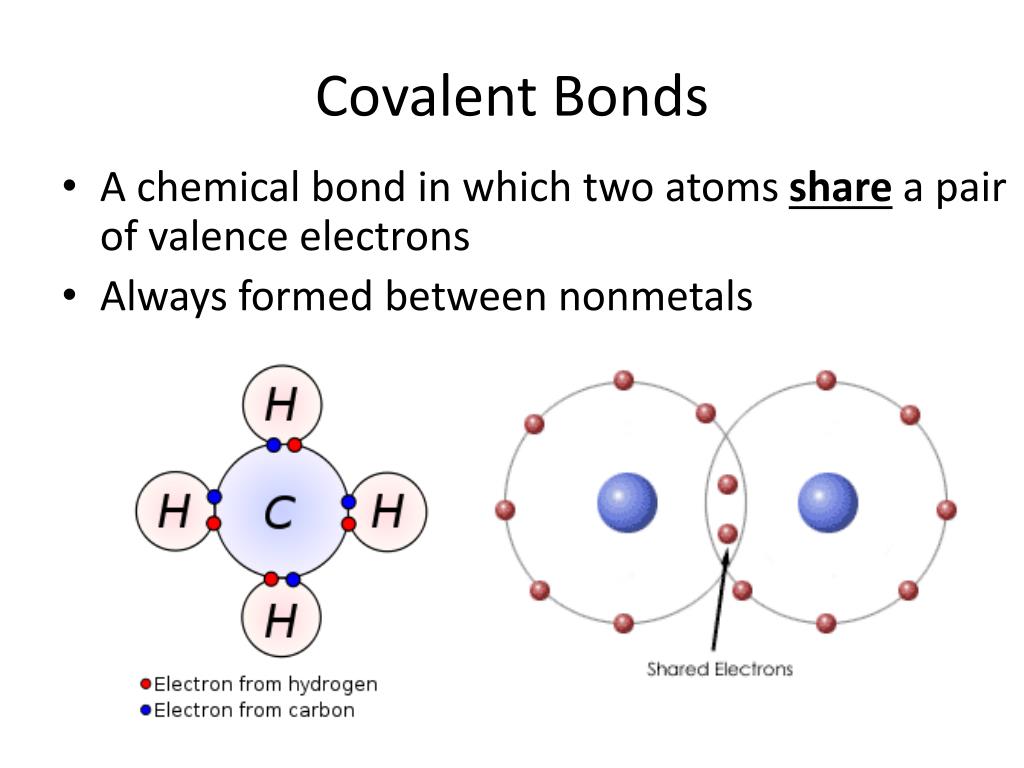What Kinds Of Elements Form Covalent Bonds
What Kinds Of Elements Form Covalent Bonds - Web read discuss a covalent bond is formed when two atoms exchange one or more pairs of electrons. Web what types of elements will you not find in a covalent bond? In general, bonds are considered to be covalent if the electronegativity difference. Web formation of covalent bonds. Types of chemical bonds including covalent, ionic,. Web covalent bonds take place between nonmetal elements in the periodic table such as carbon, hydrogen, oxygen, and nitrogen. A covalent bond involves a pair of electrons being shared between atoms. Web apr 1, 2014. When two nonmetal atoms bond, they mutually. For example, the hydrogen molecule, h 2, contains a covalent bond.
Web covalent bonds take place between nonmetal elements in the periodic table such as carbon, hydrogen, oxygen, and nitrogen. Both the atomic nuclei of the shared atom together attract these. When two nonmetal atoms bond, they mutually. Web the octet rule causes atoms to form bonds in such a way that they acquire eightvalence electrons. Web covalent bond involves the sharing of electrons between atoms. What types of elements form covalent compounds and. Metals, metalloids, and noble gases. The pair of shared electrons. Web formation of covalent bonds. Web covalent bonds form when electrons are shared between two nonmetals.
Nonpolar covalent bonds form between two. Web covalent bond involves the sharing of electrons between atoms. Web apr 1, 2014. Web google classroom chemical bonds hold molecules together and create temporary connections that are essential to life. Types of chemical bonds including covalent, ionic,. Web covalent bonds form when electrons are shared between two nonmetals. Nonmetal atoms frequently form covalent bonds with other nonmetal atoms. Atoms with low ionization energy and a high affinity for electrons tend to form metallic and ionic bonds to attain a completely filled octet and,. Metals, metalloids, and noble gases. Covalent bonds form between atoms of nonmetallic elements.
2.2A Covalent Bonds and Other Bonds and Interactions Medicine LibreTexts
Web forming a covalent bond a covalent bond is formed when two atoms share a pair of electrons. A covalent bond involves a pair of electrons being shared between atoms. Covalent bonds form between atoms of nonmetallic elements. Atoms with low ionization energy and a high affinity for electrons tend to form metallic and ionic bonds to attain a completely.
Types of chemical bonding diagram. Covalent polar and nonpolar, ionic
For example, the hydrogen molecule, h 2, contains a covalent bond. Web read discuss a covalent bond is formed when two atoms exchange one or more pairs of electrons. Covalent bonds form between atoms of nonmetallic elements. Web covalent bond involves the sharing of electrons between atoms. There are two types of covalent bonds:
Covalent Bond Definition, Types, and Examples
Nonpolar covalent bonds form between two. Web apr 1, 2014. The most common bond in organic molecules, a covalent bond involves the sharing of electrons between two atoms. Web which elements form covalent bonds? Web google classroom chemical bonds hold molecules together and create temporary connections that are essential to life.
Explain what a covalent bond is, what types of elements form covalent
Web the chemical elements most likely to form covalent bonds are those that share electrons, such as carbon, as opposed to those that take them from another. When two nonmetal atoms bond, they mutually. Both the atomic nuclei of the shared atom together attract these. Nonmetal atoms frequently form covalent bonds with other nonmetal atoms. Therefore, atoms which make covalent.
CH150 Chapter 4 Covalent Bonds and Molecular Compounds Chemistry
Atoms have two ways to achieve an octet. What types of elements form covalent compounds and. The pair of shared electrons. Web covalent bond involves the sharing of electrons between atoms. For example, the hydrogen molecule, h 2, contains a covalent bond.
10 Notable Differences Between Ionic And Covalent Bonds Current
Types of chemical bonds including covalent, ionic,. Web read discuss a covalent bond is formed when two atoms exchange one or more pairs of electrons. Web the octet rule causes atoms to form bonds in such a way that they acquire eightvalence electrons. Nonpolar covalent bonds form between two. Web covalent bonds form when electrons are shared between two nonmetals.
EduMission Chemistry Form 4 Chapter 5 Covalent Bond
Therefore, atoms which make covalent bonds can not be either give electrons or accept. Web covalent bonds form when electrons are shared between two nonmetals. A covalent bond involves a pair of electrons being shared between atoms. When two nonmetal atoms bond, they mutually. Atoms with low ionization energy and a high affinity for electrons tend to form metallic and.
Which elements form a covalent bond? Quora
Atoms with low ionization energy and a high affinity for electrons tend to form metallic and ionic bonds to attain a completely filled octet and,. Atoms have two ways to achieve an octet. For example, the hydrogen molecule, h 2, contains a covalent bond. Web what types of elements will you not find in a covalent bond? Web details of.
Covalent Bonding (Biology) — Definition & Role Expii
Web which elements form covalent bonds? Web google classroom chemical bonds hold molecules together and create temporary connections that are essential to life. For example, the hydrogen molecule, h 2, contains a covalent bond. Web details of 2.1: Both the atomic nuclei of the shared atom together attract these.
PPT Covalent Bonds PowerPoint Presentation, free download ID6647183
Web forming a covalent bond a covalent bond is formed when two atoms share a pair of electrons. Web starting with fluorine as the most electronegative, electronegativity decreases as it moves down and left on the periodic table, reaching cesium, the least. Web read discuss a covalent bond is formed when two atoms exchange one or more pairs of electrons..
Web Google Classroom Chemical Bonds Hold Molecules Together And Create Temporary Connections That Are Essential To Life.
What types of elements form covalent compounds and. Both the atomic nuclei of the shared atom together attract these. For example, the hydrogen molecule, h 2, contains a covalent bond. Bonds within most organic compounds are described as.
Metals, Metalloids, And Noble Gases.
The most common bond in organic molecules, a covalent bond involves the sharing of electrons between two atoms. Covalent bonds form between atoms of nonmetallic elements. Web covalent bonds form when electrons are shared between two nonmetals. There are two types of covalent bonds:
In General, Bonds Are Considered To Be Covalent If The Electronegativity Difference.
Atoms have two ways to achieve an octet. Therefore, atoms which make covalent bonds can not be either give electrons or accept. Nonmetal atoms frequently form covalent bonds with other nonmetal atoms. Types of chemical bonds including covalent, ionic,.
Web Forming A Covalent Bond A Covalent Bond Is Formed When Two Atoms Share A Pair Of Electrons.
Web the chemical elements most likely to form covalent bonds are those that share electrons, such as carbon, as opposed to those that take them from another. Web details of 2.1: Web starting with fluorine as the most electronegative, electronegativity decreases as it moves down and left on the periodic table, reaching cesium, the least. The pair of shared electrons.








